Jahan Nama Garden: History, Design & Practical Visitor Tips
Jahan Nama Garden, one of the oldest gardens in Shiraz city, holds a distinct place due to its ancient origins and connection to Shiraz's illustrious past.
Shiraz, a city in southwestern Iran, is often regarded as the cultural heart of the country. Known for its rich history, Shiraz has been a hub of art, literature, and architecture for centuries. It is famously associated with iconic Persian poets like Hafez and Saadi, whose tombs are among the city's most visited landmarks. Beyond its literary significance, Shiraz is renowned for its traditional Persian gardens, which represent the pinnacle of Persian landscaping and design.
Among the most famous gardens in Shiraz is Eram Garden, a UNESCO World Heritage Site, celebrated for its lush greenery and historical pavilion. However, Jahan Nama Garden, one of the oldest gardens in the city, holds a distinct place due to its ancient origins and connection to Shiraz's illustrious past. The garden’s well-preserved design and its tranquil atmosphere make it an essential stop for visitors looking to experience the timeless beauty of Persian gardens. Jahan Nama’s historical significance, combined with its striking landscape, positions it as a notable destination within Shiraz's cultural landscape.
History of Jahan Nama Garden
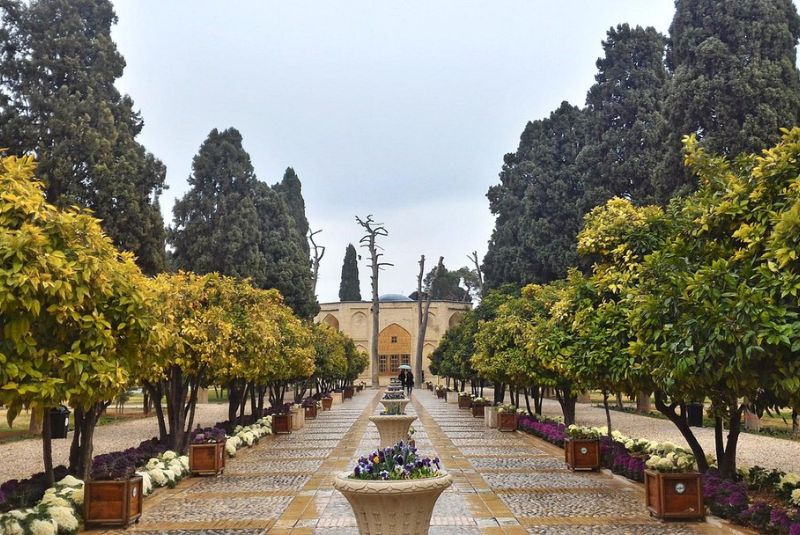
Jahan Nama Garden is one of Shiraz’s most ancient gardens, with its origins tracing back to the pre-Islamic era. While its early history remains less documented, the garden gained prominence during the rule of the Zand dynasty in the 18th century. Under the reign of Karim Khan Zand, the garden was revitalized and transformed into one of Shiraz’s most significant green spaces. Karim Khan, known for his contributions to the city’s urban development, ensured the garden’s design reflected the classic elements of Persian landscaping, including symmetry and the use of water channels.
Throughout the years, Jahan Nama Garden has undergone several restorations, particularly during the Zand and later Qajar periods. These efforts have helped preserve its traditional layout, which includes cypress trees, ornamental plants, and water features that remain vital to Persian garden aesthetics. The garden has managed to retain its serene atmosphere, offering visitors a glimpse of Shiraz's historical charm.
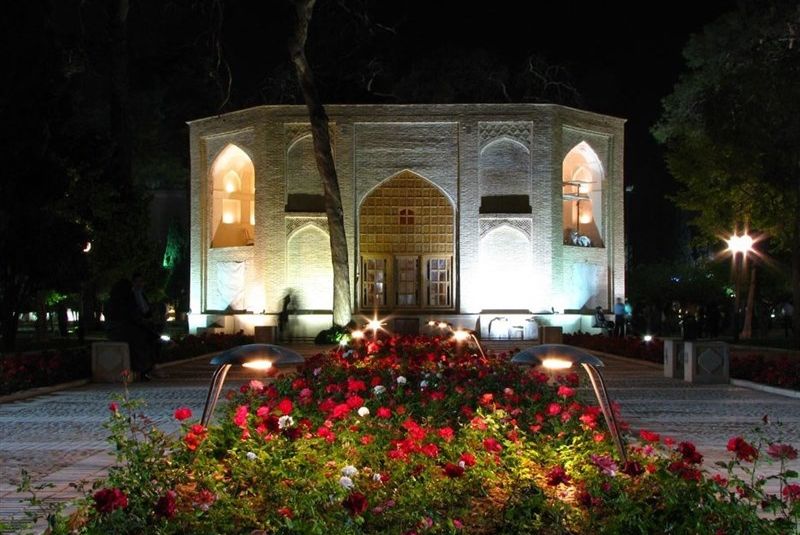
Architecturally, Jahan Nama Garden is significant not only for its landscaping but also for its integration of Persian design principles. The garden’s layout mirrors the structured elegance of Persian gardens, which emphasize harmony between nature and architecture. Its central pavilion, along with the thoughtful placement of trees and pathways, exemplifies the enduring influence of Persian garden design on Iranian culture.
Layout and Features of Jahan Nama Garden
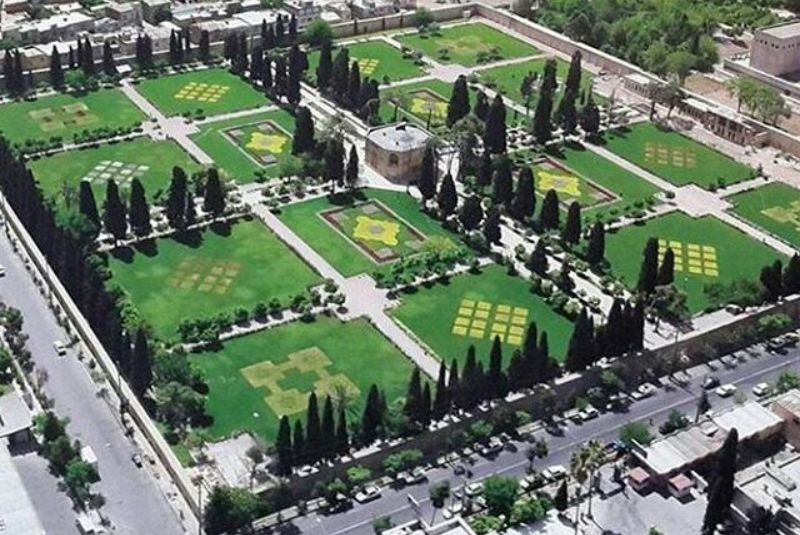
Jahan Nama Garden adheres to the traditional Persian garden layout, which emphasizes balance, harmony, and the interaction between nature and human-made structures. A hallmark of Persian garden design is symmetry, with pathways and water channels dividing the space into equal sections. In Jahan Nama, this symmetry is evident in the careful arrangement of trees and flower beds, guiding visitors through its serene and structured environment.
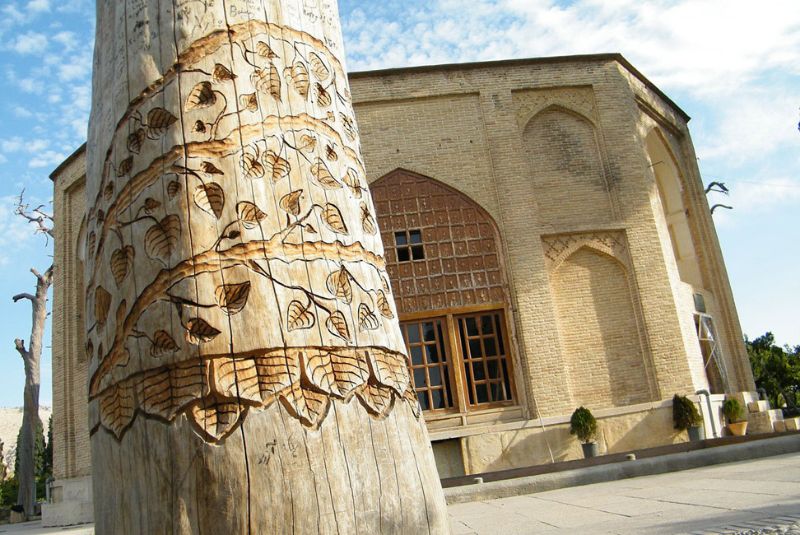
A key feature of the garden is its rich variety of flora. Towering cypress trees, iconic in Persian gardens for their longevity and symbolism, line the pathways, offering shade and adding to the garden’s majesty. In addition to the cypress, visitors will find various ornamental plants, shrubs, and seasonal flowers that bloom throughout the year, enhancing the garden’s visual appeal. The garden is designed to highlight the changing colors and textures of plants, giving it a fresh atmosphere in every season.
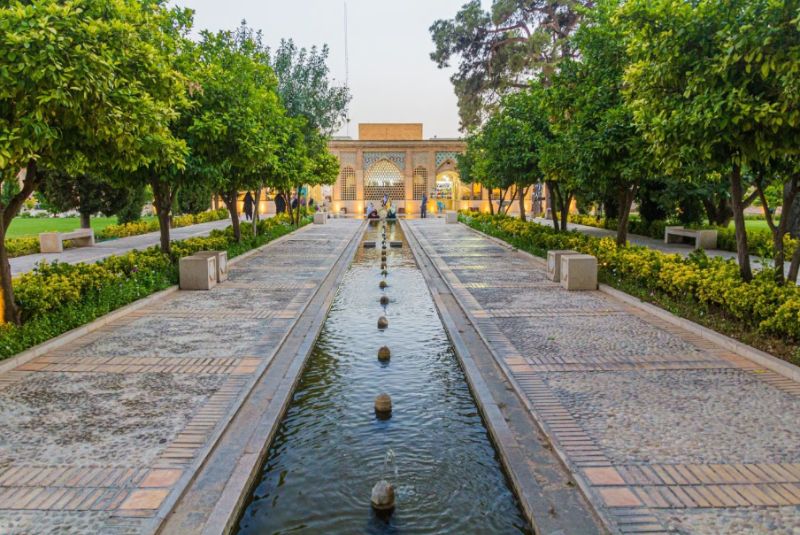
At the heart of Jahan Nama Garden lies a central pavilion, a common architectural element in Persian gardens. This pavilion provides a place for rest and contemplation, surrounded by greenery and the soothing sound of flowing water. Its simple yet elegant design reflects the aesthetic principles of Persian architecture, seamlessly blending with the natural surroundings. Other small structures within the garden also reflect traditional Persian design, adding to its historical significance.
Water plays a vital role in the garden's layout. Like many Persian gardens, Jahan Nama uses water channels to create a cooling effect, particularly important in Shiraz’s warm climate. These channels and fountains are carefully placed to enhance the sense of peace and tranquility, offering refreshing sights and sounds.

The garden's appearance varies with the seasons, offering distinct experiences throughout the year. In spring, vibrant flowers bloom, while autumn brings rich hues to the foliage. Winter’s bare trees allow for a more subdued yet tranquil landscape, making the garden worth visiting at different times of the year.
Visitor Information
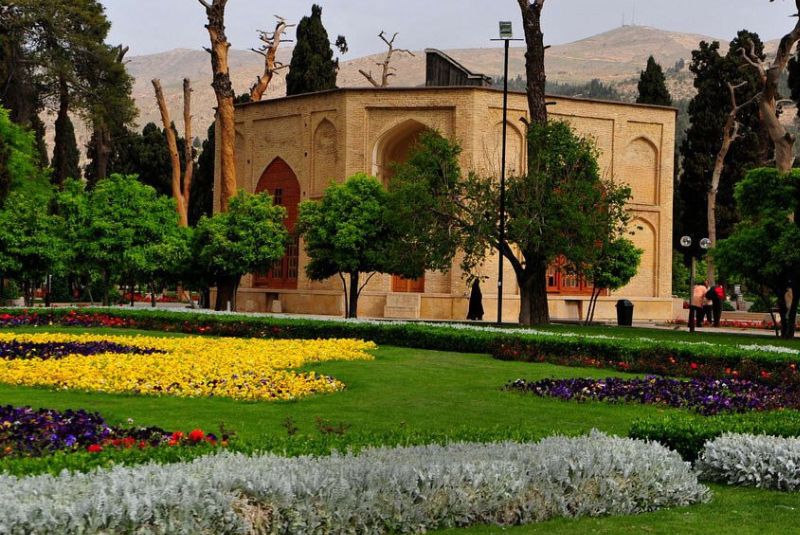
Jahan Nama Garden is conveniently located in central Shiraz, on Hafez Street, making it easily accessible to visitors. It is situated close to major attractions like Eram Garden and the Tomb of Hafez. Public transport options such as buses and taxis are available, and the garden is just a short drive from key locations in the city.
The garden is generally open to visitors daily, from early morning until evening, though hours may vary depending on the season. Entrance fees are affordable, making it an accessible destination for both local and international tourists.
The best time to visit Jahan Nama Garden is during spring (March to May), when the flowers are in full bloom, and the weather is pleasant. Autumn (September to November) is also an ideal time, offering cooler temperatures and the garden’s seasonal colors. Visitors are encouraged to avoid the hot summer afternoons, as Shiraz can be quite warm during this period.

While there are no formal guided tours, the garden’s layout is straightforward enough for a self-guided visit. There are facilities like restrooms, and benches are available for those who want to sit and take in the scenery. For photography enthusiasts, the garden’s symmetry, pavilions, and natural beauty offer many excellent photo opportunities. It’s important to respect the garden's tranquility, avoid stepping on flower beds, and follow any posted guidelines.
Jahan Nama Garden Nearby Attractions
After visiting Jahan Nama Garden, there are several other notable attractions in Shiraz that offer visitors a deeper appreciation of the city’s cultural and historical richness. Here are some nearby sites to explore:
Eram Garden

A UNESCO World Heritage Site, Eram Garden is one of the most famous Persian gardens in Iran. Known for its expansive botanical collection, it offers a peaceful atmosphere, beautiful landscapes, and a historical pavilion that blends perfectly with the surrounding greenery. It’s an ideal spot for those who want to experience the elegance of Persian garden design.
Tomb of Hafez (Hafezieh)
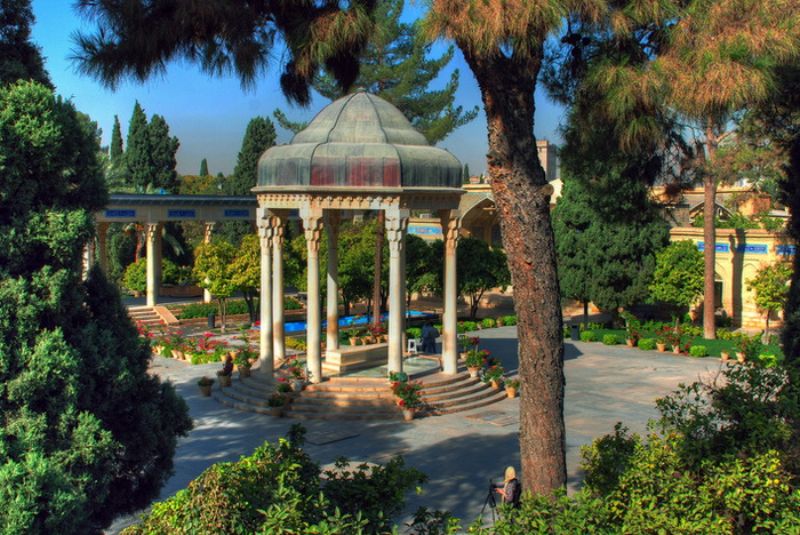
The final resting place of the beloved Persian poet Hafez, this site is surrounded by beautifully landscaped gardens. The tomb attracts both locals and tourists who come to pay their respects, reflect on Hafez’s poetry, and enjoy the tranquility of the setting. It’s one of Shiraz’s most important cultural landmarks.
Tomb of Saadi (Saadieh)

Another prominent poet, Saadi, is buried in a garden-like setting that reflects the poet’s deep connection with nature and humanism. The tomb is located in a peaceful environment, offering a reflective space for visitors who appreciate Persian literature and the serene beauty of Shiraz.
Shiraz’s Vakil Bazaar
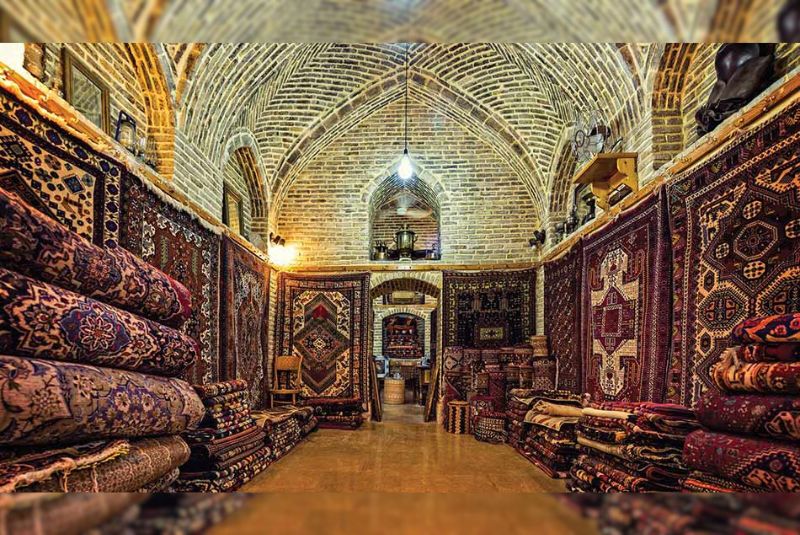
For those looking to experience the vibrant culture of Shiraz, Vakil Bazaar is a must-visit. This bustling market is a showcase of traditional Persian architecture, offering a wide range of local goods, from spices and carpets to handicrafts. It’s an excellent place to immerse yourself in the city’s daily life.
Nasir al-Mulk Mosque (Pink Mosque)
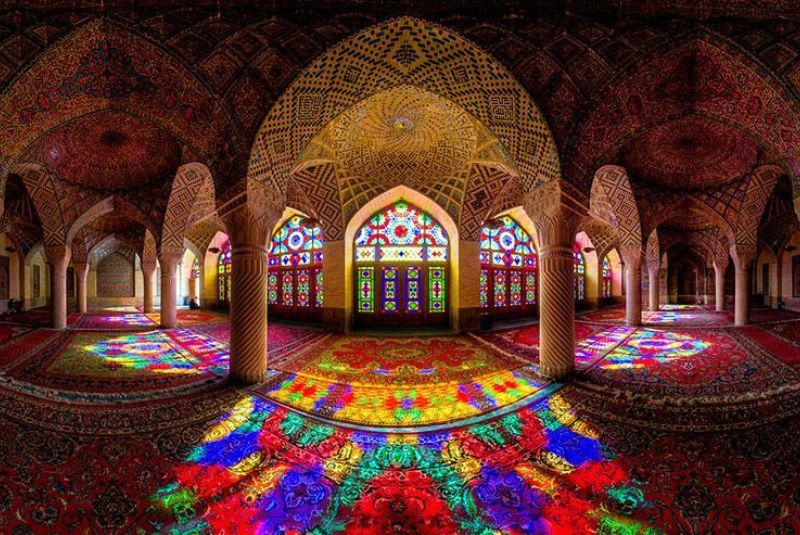
Famous for its stunning stained glass windows, this mosque is best visited in the morning when sunlight creates a mesmerizing display of colors on the interior. The intricate tilework and play of light make it one of Shiraz’s most visually striking landmarks.
Arg of Karim Khan
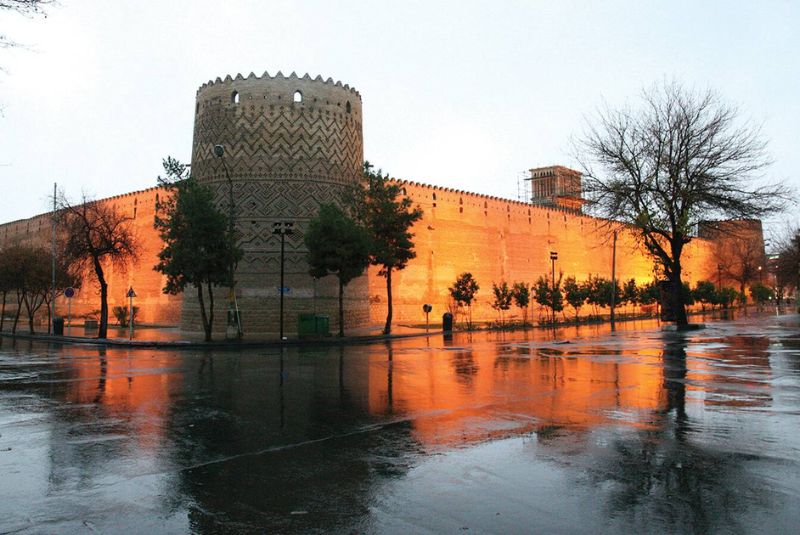
This large fortress was built during the Zand dynasty and served as the royal residence of Karim Khan. The imposing structure offers insights into 18th-century Persian architecture and the Zand period’s historical significance. Its thick walls and towers are a reminder of Shiraz’s strategic importance.
Final Thoughts
Jahan Nama Garden offers visitors a chance to experience the timeless beauty of Persian garden design, with its balance of natural and architectural elements. Its historical significance and serene atmosphere make it a must-see for anyone exploring Shiraz.
Planning a trip to Shiraz provides an opportunity to fully appreciate the charm and beauty of this historic city, its gardens, and its cultural landmarks.
Share your story!
Comment below and let us know about your Experience.
Your story inspires others!


Comment
Leave a Comment